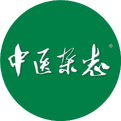Blood stasis is a common cause and pathological product in TCM internal medicine, and it is also an important factor in the progression and deterioration of diseases. Therefore, activating blood and resolving stasis is one of the main treatment methods for internal medicine diseases.
01
Choosing Blood-Activating and Stasis-Resolving Herbs According to Traditional Properties
1) Four Qi: Cold and Heat
Warm Blood-Activating Herbs: In modern clinical treatment of coronary heart disease, activating blood and resolving stasis is often the primary or preferred method. Since the heart governs the blood vessels, and the blood vessels should flow harmoniously, to prevent cold from obstructing the blood vessels, warm blood-activating herbs such as Chuan Xiong (Ligusticum chuanxiong), Dang Gui (Angelica sinensis), Hong Hua (Carthamus tinctorius), and Gui Zhi (Cinnamon twig) are commonly used to harmonize the blood and promote Yang Qi. For unstable angina with significant blood stasis and symptoms of blood stasis and phlegm-heat, the treatment should not rely solely on bitter and cold herbs; instead, warm herbs such as Xie Bai (Garlic chives), Jiang Huang (Turmeric), and Gui Zhi should be included. Similarly, in the treatment of peptic ulcers, warm blood-activating herbs are emphasized due to the predominant Yang deficiency of the spleen and stomach, as blood needs warmth to circulate. Overuse of cold blood-activating herbs due to local heat and stasis can damage the Yang of the spleen and stomach, leading to unresolved stasis and prolonged illness. Clinically, warm blood-activating herbs such as Gui Zhi, Chuan Xiong, and Dang Gui are often selected, while cool blood-activating herbs like Mu Dan Pi (Paeonia suffruticosa) and Sheng Di Huang (Rehmannia glutinosa) are generally avoided, or if used, they must be combined with warm herbs to prevent cold from congealing the blood vessels.
Cool Blood-Activating Herbs: For acute cholecystitis with jaundice, clearing heat and promoting dampness should be the main focus, supplemented with bitter and cold herbs. On this basis, cool blood-activating herbs such as Dan Shen (Salvia miltiorrhiza), Chi Shao (Paeonia lactiflora), and Yu Jin (Curcuma aromatica) can be added to assist in clearing heat and promoting blood circulation, aiding in the resolution of jaundice. In the early stages of liver cirrhosis, cool blood-activating herbs like Dan Shen, Chi Shao, and Zei Lan (Lycopus lucidus) are commonly used, while warm and drying blood-activating herbs are avoided to prevent excessive blood loss. Other conditions such as hematuria caused by acute glomerulonephritis and purpura nephritis should primarily use cool blood-activating herbs.
Using Both Cold and Warm Blood-Activating Herbs: In chronic toxic hepatitis, where damp-heat toxins are hidden in the blood, causing damage to Yin and Qi, leading to stasis and phlegm, treatment should focus on activating blood, dispersing stasis, and detoxifying. Herbs such as Da Huang (Rhubarb), Zihua Diding (Viola yedoensis), Dan Shen, Jin Yin Hua (Honeysuckle), Bai Jiao Cao (Patrinia scabiosaefolia), and Ban Lan Gen (Isatis indigotica) can be used, along with appropriately selected warm blood-activating herbs like Hong Hua, Pian Jiang Huang (Curcuma longa), and Jiao Shan Zha (Crataegus). In chronic cases, it is common to see Yang deficiency and Qi exhaustion, with damp-heat toxins transforming into cold. At this time, treatment should focus on tonifying Qi, warming Yang, and transforming dampness, while also clearing heat and detoxifying the blood. It is important not to solely warm Yang and transform dampness, as this may harm the liver Yin and worsen the condition. Therefore, blood-activating herbs should also be used in both cold and warm forms, such as Hong Hua, Dang Gui Wei (Tail of Angelica), Su Mu (Sappan wood), Chi Shao, and Yu Jin. For viral myocarditis with heat toxins hidden in the blood and Yin, which easily leads to blood stasis, a combination of cool blood-activating and detoxifying herbs should be used, such as Chi Shao, Dan Shen, Hu Zhang (Polygonum cuspidatum), Di Gu Pi (Lycium barbarum), Jin Yin Hua, Zihua Diding, Da Qing Ye (Isatis tinctoria), and Ban Lan Gen. However, since the heart governs the blood vessels, the herbs should not be overly cold; therefore, slightly warm blood-activating herbs like Hong Hua, Jiao Shan Zha, and Dang Gui should be added to harmonize the blood vessels.
2) Meridian Affinities of the Herbs
Different blood-activating herbs have different meridian affinities, meaning they act on different areas of the body, and should be applied accordingly in clinical practice.
For example, if the lesion is in the upper body, Chuan Xiong and Pian Jiang Huang should be selected; if in the lower body, Chuan Niu Xi (Cyathula officinalis) and Su Mu are preferred. In the clinical treatment of hypertension with liver Yang rising, blood-activating herbs that guide blood downward, such as Chuan Niu Xi and Liu Ji Nu (Liu Jun Zi), are often used.
In addition to the meridian affinities of the blood-activating herbs themselves, the use of guiding herbs can enhance the targeting of the treatment. Wang Qingren’s five stasis-dispelling decoctions are examples. Each stasis-dispelling decoction includes herbs like Tao Ren (Peach kernel), Hong Hua, Chi Shao, Chuan Xiong, and Dang Gui, using both cold and warm herbs to activate blood and open the vessels. On this basis, the Xue Fu Zhu Yu Tang (Blood Mansion Stasis-Resolving Decoction) adds Chai Hu (Bupleurum) and Jie Geng (Platycodon grandiflorum) to guide to the chest, while the Tong Qiao Huo Xue Tang (Open Orifices and Activate Blood Decoction) adds She Xiang (Moschus) and Laonong (Scallion) to guide to the brain, and the Ge Xia Zhu Yu Tang (Stasis-Resolving Decoction for Below the Diaphragm) adds Xiang Fu (Cyperus rotundus) and Wu Yao (Lindera aggregata) to guide below the diaphragm, while the Shao Fu Zhu Yu Tang (Lower Abdomen Stasis-Resolving Decoction) adds Xiao Hui Xiang (Foeniculum vulgare) and Rou Gui (Cinnamon) to guide to the lower abdomen, and the Shen Tong Zhu Yu Tang (Body Pain Stasis-Resolving Decoction) adds Qin Jiao (Gentiana macrophylla) and Qiang Huo (Notopterygium incisum) to guide to the meridians, to exert targeted therapeutic effects.
02
Combining Disease Differentiation and Syndrome Differentiation to Enhance Targeted Medication
1) Aligning with the Development and Changes of the Disease
For some diseases, it is necessary to use blood-breaking and stasis-dispelling herbs, such as in liver cirrhosis and ascites. The blood stasis in liver cirrhosis is different from general blood vessel obstruction; its stasis is often long-standing and requires blood-breaking methods to improve. Therefore, herbs like Tao Ren, Dang Gui, and Tu Bie Chong (Eupolyphaga sinensis) are commonly used to activate blood and open the vessels. In cases of liver cirrhosis with ascites, the important pathological change is that “if the blood does not flow, it becomes water”; at this time, general blood-activating herbs may also be ineffective. If the vital Qi is not deficient, insect-based herbs can be selected to search for and disperse stasis, such as Tu Bie Chong, along with diuretics to reduce swelling.
For some diseases, blood-activating herbs should not be used too aggressively to avoid depleting Qi and harming the Zheng Qi. For example, in the treatment of peptic ulcers, blood-breaking herbs like San Leng (Sparganium stoloniferum), E Zhu (Curcuma zedoaria), Tu Bie Chong, and Zhe Bei Mu (Fritillaria thunbergii) are generally not used; instead, herbs with blood-nourishing and activating properties such as Dan Shen, Dang Gui, San Qi (Panax notoginseng), and Ji Xue Teng (Spatholobus suberectus) are preferred, and small amounts are best. Even in active phases with significant stasis symptoms, if Da Huang and Tao Ren are used, they should be in small quantities. Similarly, in the treatment of purpura nephritis, blood-activating and stasis-resolving herbs should primarily focus on cooling the blood and dispersing blood, with minimal use of blood-breaking herbs to avoid excessive bleeding.
In some diseases, the degree of blood stasis varies at different stages of development, and the choice of herbs should be adjusted accordingly. For example, in coronary heart disease with mild angina, blood-activating herbs such as Dan Shen, Yu Jin, Chi Shao, and Hong Hua can be selected; in severe cases with intense pain, dark purple tongue, and deep, wiry pulse, blood-breaking herbs like San Leng and E Zhu may be chosen.
2) Considering the Pathological Mechanism of the Disease
In TCM, unstable angina is a sign of significant blood vessel stasis; therefore, the intensity of blood-activating and stasis-resolving herbs differs from that for stable angina. The dosage of blood-activating and stasis-resolving herbs should be increased, and even blood-breaking herbs such as Tu Bie Chong, Tao Ren, and Zhe Bei Mu may be added. In the recovery phase of stroke and post-stroke sequelae, the use of blood-activating and stasis-resolving herbs should not be excessive, as the thrombus has already undergone organization, and heavy use of blood-activating herbs may not effectively open the vessels. Instead, they should be used moderately alongside supportive treatments to gradually restore blood flow and improve limb function.
3) Timing of Medication Focused on Disease Prognosis
In many clinical diseases, blood stasis symptoms may not be evident at the time of consultation, but proactively using blood-activating and stasis-resolving herbs based on the potential pathological mechanisms can often prevent disease progression and yield significant results. For example, in peptic ulcer disease, the smooth flow of liver and gallbladder Qi directly affects the function of the spleen and stomach. If liver Qi is not smooth or rises, it can lead to stagnation of spleen and stomach Qi, resulting in epigastric pain. Therefore, clinical treatment often employs methods to soothe the liver and regulate the spleen. Since Qi and blood are interdependent, and blood carries Qi, smooth blood vessels facilitate the smooth flow of liver Qi. Even in the absence of blood stasis symptoms, it is advisable to include blood-activating herbs with liver-soothing properties that are relatively mild, such as Chuan Xiong, Dan Shen, Xuan Fu Hua (Inula japonica), and Dang Gui, which do not harm the Zheng Qi and can harmonize both Qi and blood for better outcomes.
4) Balancing Treatment Duration for Long-Term Benefits
Blood stasis is a common pathological product in difficult-to-treat internal diseases and is a key factor in disease progression and deterioration. Therefore, activating blood and resolving stasis treatment should run throughout the course of the disease. In certain clinical treatments, regardless of whether Yang deficiency or Yin deficiency is present, and regardless of whether methods to soothe the liver and drain fire, strengthen the spleen and eliminate dampness, or tonify kidney Qi are used, blood-activating and stasis-resolving herbs such as Dan Shen, Chi Shao, Mu Dan Pi, Yu Jin, and Chuan Xiong should be included to help delay disease progression and protect target organ damage. This applies to the treatment of coronary heart disease, viral myocarditis, atrophic gastritis, chronic hepatitis, chronic nephritis, diabetic nephropathy, chronic renal failure, and IgA nephropathy, where activating blood and resolving stasis should be a continuous part of treatment.
In contrast, primary glomerulonephritis is often pathologically classified as a microvascular disease, generally without coagulation disorders, and blood-activating and stasis-resolving herbs are not typically used unless there are blood stasis symptoms. Misuse of blood-activating and stasis-resolving herbs can lead to blood depletion and Yin damage.
5) Emphasizing Synergistic Effects in Combinations
Blood-activating and stasis-resolving herbs are often used in combination with other types of herbs to achieve targeted treatment and synergistic effects.
For example, in the treatment of chronic stable angina, blood-activating herbs are combined with Qi-tonifying herbs, with Huang Qi (Astragalus membranaceus) often used in doses above 30g, along with Ren Shen (Ginseng) or Xi Yang Shen (American ginseng) around 10g to greatly tonify the Yuan Qi. When the Yuan Qi is restored, it can then nourish the Zong Qi and heart Qi. If Ren Shen is not used, warming kidney herbs such as Yin Yang Huo (Epimedium), Ba Jiao Tian (Morinda officinalis), and Bu Guo Zhi (Psoralea corylifolia) can be combined with Qi-tonifying herbs like Huang Qi and Dang Shen (Codonopsis pilosula) to achieve a dual effect of tonifying both Yuan Qi and Zong Qi.
In the pathogenesis of thrombotic cardiovascular diseases, there are often pathogenic factors of “toxins” or a combination of “stasis” and “toxins”. Clinically, blood-activating and stasis-resolving formulas are often combined with heat-clearing and detoxifying herbs such as Da Huang, Huang Lian (Coptis chinensis), Hu Zhang, and Jin Yin Hua. In the treatment of sick sinus syndrome, they are often combined with Qi-tonifying and warming Yang herbs.
When warming the heart Yang, since Yang deficiency is often a gradual result of Qi deficiency, it is important to combine warming herbs with Qi-tonifying herbs. Additionally, it is beneficial to warm both the heart and kidney; even in the absence of obvious kidney Yang deficiency symptoms, warming kidney herbs such as Yin Yang Huo, Bu Guo Zhi, and Ba Jiao Tian should be included to achieve the goal of elevating kidney Yang and promoting heart Yang.
In the treatment of chronic heart failure, blood-activating herbs are often combined with warming Yang and diuretic herbs. Warming Yang herbs typically include Gui Zhi, and if there is no cold congealing in the blood vessels, cold extremities, or kidney Yang deficiency with internal cold, Fu Zi (Aconitum carmichaelii) is not used; diuretic herbs are often selected from Che Qian Zi (Plantago asiatica), Chi Xiao Dou (Phaseolus calcaratus), Bai Mao Gen (Imperata cylindrica), Fu Ling (Poria cocos), and Zhu Ling (Polyporus umbellatus), which promote diuresis without harming Yin fluids.
Click to view the original article
Li Shengyao, Shi Dazhuo, Mao Huimin, Qu Hua. The Application of Blood-Activating and Stasis-Resolving Herbs in the Treatment of Common Internal Medicine Diseases. Journal of Traditional Chinese Medicine, 2015, 56(18): 1605-1607.
Friendly Reminder
Please use medication under the guidance of a professional physician; non-professionals should not self-medicate.
Follow us for updates Subscribe to the magazine



